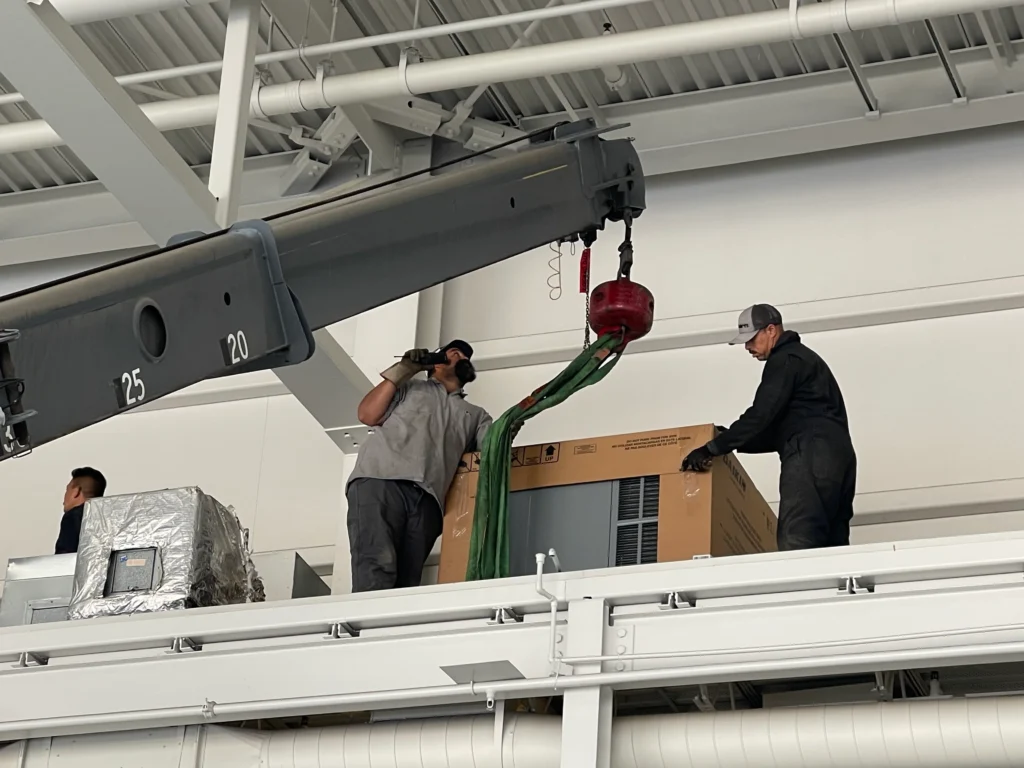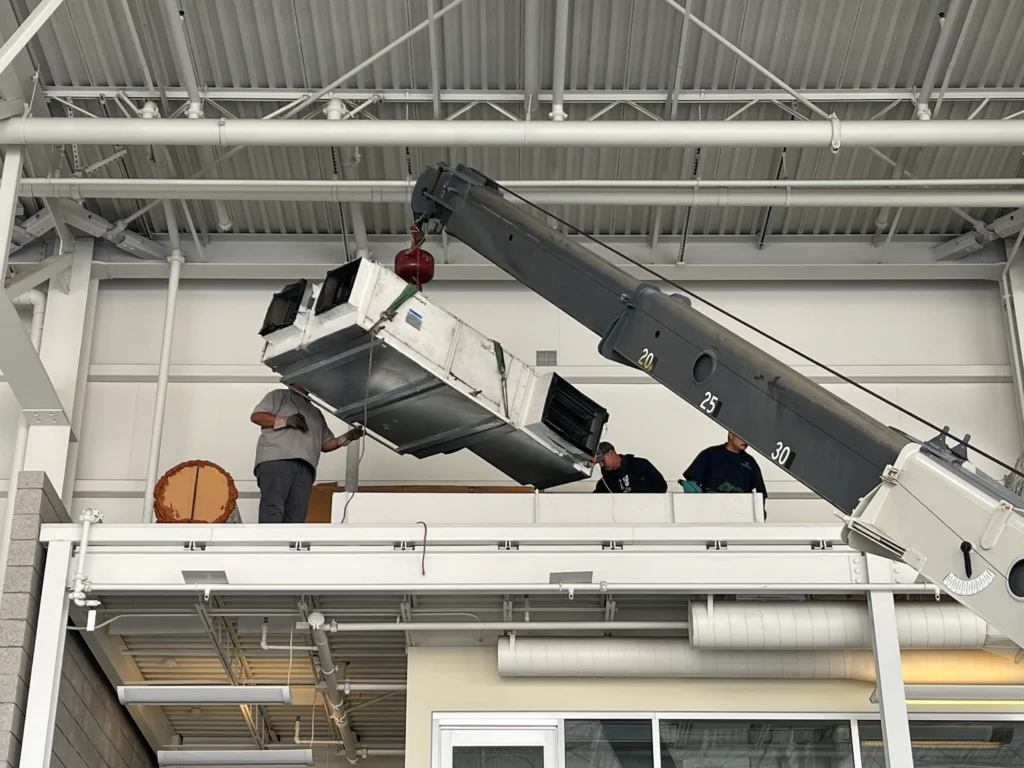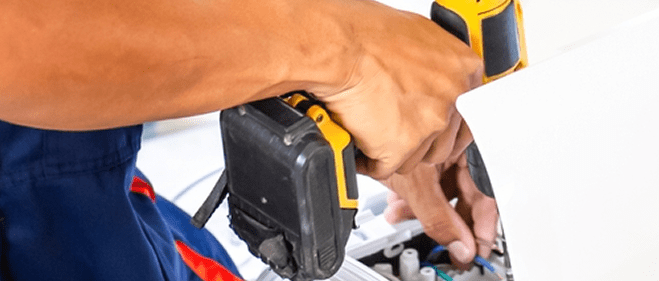New Commercial HVAC Installation Services
Table of Contents
New Commercial HVAC Installation Services
When your commercial HVAC system consistently breaks down, struggles to maintain comfortable temperatures, or drives up energy bills, it’s time to consider a new installation. Modern commercial HVAC technology offers dramatic improvements in efficiency, reliability, and performance that can transform your business operations.
The decision to install a new commercial HVAC system represents a significant investment, but it’s one that pays dividends through reduced operating costs, improved comfort, and enhanced productivity. This comprehensive guide explores why upgrading makes sense, how to choose the right system, and what to expect from the installation process.
Smart business owners recognize that outdated HVAC systems cost more to operate than new, efficient units. The question isn’t whether to upgrade—it’s when and how to make the transition seamlessly.

Upgrading for Performance & Energy Efficiency
Today’s commercial HVAC systems deliver performance levels that would have been impossible just a decade ago. Advanced technology, improved refrigerants, and sophisticated controls work together to create systems that are more efficient, more reliable, and easier to maintain than older units.
The energy efficiency gains alone justify new installations for most businesses. Modern commercial HVAC systems achieve SEER ratings of 15-20 or higher, compared to 8-10 for systems installed before 2000. This efficiency improvement translates directly into lower monthly utility bills and reduced environmental impact.
Variable speed technology represents one of the biggest advances in commercial HVAC efficiency. Unlike older systems that run at full capacity or shut off completely, variable speed units adjust output to match actual demand. This capability reduces energy consumption by 20-40% while maintaining more consistent temperatures throughout your building.
Smart controls and building automation integration take efficiency even further. Modern systems can adjust temperatures based on occupancy schedules, outdoor weather conditions, and real-time energy costs. Some systems even learn usage patterns and optimize operations automatically.
Choosing the Right System for Your Business Needs
Selecting the right commercial HVAC system requires understanding your building’s unique requirements. Factors like square footage, ceiling height, insulation levels, window placement, and usage patterns all influence system sizing and design.
Building size and layout determine the type and capacity of equipment needed. Single-story buildings might benefit from rooftop units, while multi-story structures often require centralized systems with extensive ductwork. Open floor plans have different requirements than buildings with many individual offices or rooms.
Occupancy patterns affect system sizing calculations. A restaurant with heavy customer traffic during meal times needs different capacity than an office building with consistent occupancy throughout the day. Retail stores face seasonal variations that impact HVAC requirements.
Special requirements like humidity control, air filtration, or temperature-sensitive equipment influence system selection. Medical facilities need specialized air handling capabilities, while manufacturing plants might require explosion-proof equipment or special ventilation systems.
Future expansion plans should factor into system selection. Installing a slightly larger system initially costs less than major modifications later. Modular systems offer flexibility for businesses expecting growth or changes in space utilization.
Professional load calculations ensure proper system sizing. Oversized systems waste energy and provide poor humidity control, while undersized units struggle to maintain comfort during peak demand periods. Accurate calculations consider all factors affecting heating and cooling requirements.
Certified Technicians & Satisfaction Guaranteed
Commercial HVAC installation requires specialized knowledge and experience that goes far beyond residential work. The complexity of commercial systems, local building codes, and safety requirements demand certified professionals who understand every aspect of the installation process.
Proper installation is crucial for system performance and longevity. Even the highest-quality equipment will underperform if installation shortcuts compromise its operation. Professional installation ensures your new system delivers the efficiency, reliability, and comfort you expect.
Licensed, Insured, and Energy-Efficient Installations
Professional licensing provides assurance that installers understand local codes and safety requirements. Commercial HVAC work requires specific licenses that demonstrate competency with complex systems and commercial building requirements. Always verify that your contractor holds appropriate licenses for your location and project scope.
Insurance coverage protects your business from liability during installation. Comprehensive general liability and workers’ compensation insurance ensure you’re not responsible for accidents or property damage during the installation process. Professional contractors maintain substantial insurance coverage and provide certificates of insurance upon request.
Energy efficiency expertise maximizes the return on your HVAC investment. Certified technicians understand how to optimize system performance, configure controls for maximum efficiency, and ensure proper airflow throughout your building. They can also identify opportunities for utility rebates and tax incentives that reduce installation costs.
Ongoing support ensures long-term satisfaction with your new system. Professional contractors provide comprehensive warranties, maintenance programs, and priority service for systems they install. This support protects your investment and ensures reliable operation for years to come.
Quality installation includes thorough testing and commissioning to verify that every component operates correctly. Professional technicians document system performance, provide operator training, and create maintenance schedules tailored to your specific equipment and usage patterns.

Commercial HVAC System Installation Process
Professional HVAC installation follows a systematic process that ensures optimal performance and minimizes disruption to your business operations. Understanding this process helps you prepare for installation and set appropriate expectations for timing and coordination.
The installation process typically takes 2-5 days for most commercial projects, depending on system complexity and building requirements. Larger projects or specialized systems may require additional time, but experienced contractors provide detailed timelines during the planning phase.
Free Consultation → Custom Quote → Professional Install
Free consultation begins with a comprehensive assessment of your current system and building requirements. Professional contractors evaluate your existing equipment, ductwork, electrical systems, and space constraints to understand the scope of work required.
During the consultation, contractors discuss your comfort goals, energy efficiency objectives, and budget considerations. They explain different system options and help you understand the benefits and trade-offs of various approaches. This consultation forms the foundation for accurate project planning and pricing.
Custom quotes provide detailed breakdowns of equipment costs, installation labor, permits, and any additional services required. Professional contractors explain what’s included in their pricing and identify any potential complications that could affect costs. They also outline warranty terms and ongoing service options.
Detailed quotes help you compare options and understand the value proposition of different systems and contractors. Look for quotes that include specific equipment models, installation timelines, and clear explanations of what work is included.
Professional installation begins with careful preparation and protection of your business space. Experienced crews work efficiently to minimize disruption while ensuring proper installation techniques. They coordinate with your schedule to reduce impact on business operations.
Installation includes equipment placement, electrical connections, ductwork modifications, control system programming, and comprehensive testing. Professional crews clean up thoroughly and dispose of old equipment responsibly.

Emergency HVAC Issues We Fix
Your system may need urgent attention if you’re experiencing:
- No airflow from vents
- Furnace blowing cold air
- AC blowing warm air
- System won’t turn on
- Iced-over AC or refrigerant line
- Thermostat not responding
- Loud, unusual noises from the unit
- Weak airflow or poor indoor air quality
- Water leaks around the unit
- Burning smells or electrical odor
- Complete system failure
If you notice any of these signs, don’t wait. Contact COOL AID for immediate HVAC help.
ROI: Long-Term Savings & System Reliability
New commercial HVAC installations deliver measurable returns on investment through reduced energy costs, lower maintenance expenses, and improved business productivity. Understanding these benefits helps justify the initial investment and demonstrates the value of professional installation.
Energy savings provide the most direct financial benefits. Modern systems typically reduce energy consumption by 30-50% compared to units installed before 2000. For a business spending $10,000 annually on heating and cooling, this represents $3,000-$5,000 in yearly savings.
Reduced maintenance costs add to overall savings. New systems require less frequent repairs and service calls, reducing ongoing expenses. Warranty coverage eliminates unexpected repair bills during the first several years of operation.
Improved productivity from better comfort control can significantly impact business results. Studies show that employee productivity increases 6-9% in properly climate-controlled environments. For businesses with high labor costs, this productivity gain can exceed energy savings in total value.
Enhanced reliability prevents costly business disruptions. New systems experience 90% fewer breakdowns than aging equipment, reducing the risk of lost business due to comfort system failures. This reliability is particularly valuable for businesses that depend on specific temperature or humidity conditions.
Property value improvements benefit building owners through higher market values and improved tenant attraction. Modern HVAC systems are selling points for commercial properties and can command higher rents or sale prices.
Environmental benefits support corporate sustainability goals while potentially qualifying for green building certifications or tax incentives. Many businesses find that environmental improvements enhance their reputation with customers and employees.
The payback period for new commercial HVAC systems typically ranges from 3-7 years, depending on local energy costs and the efficiency of existing equipment. After payback, all savings contribute directly to improved profitability.
Make the Smart Investment in Your Business’s Future
Your commercial HVAC system affects every aspect of your business operations, from employee comfort to customer satisfaction to monthly operating costs. Investing in a new, efficient system positions your business for years of reliable, cost-effective climate control.
Don’t let an aging HVAC system drain your profits or compromise your business operations. New installations offer immediate improvements in efficiency, reliability, and comfort that pay dividends for years to come.
Professional installation ensures you maximize the benefits of modern HVAC technology. Experienced contractors handle every aspect of the process, from system selection to final commissioning, ensuring optimal performance and long-term satisfaction.
Ready to upgrade your commercial HVAC system? Contact 1800coolaid.com today for a free consultation and custom quote. Our certified technicians specialize in commercial installations that deliver maximum efficiency, reliability, and value. Don’t wait—start enjoying the benefits of modern HVAC technology and begin reducing your energy costs immediately.
Frequently Asked Questions
How long does commercial HVAC installation typically take?
Regular commercial HVAC maintenance improves system reliability, reduces unexpected breakdowns, lowers energy costs, and extends the lifespan of your equipment. Scheduled tune-ups also help maintain superior indoor air quality, keeping your workplace safe and comfortable for both employees and customers.
What warranties are included with new commercial HVAC installations?
Most commercial HVAC systems should be serviced at least twice a year—once before the cooling season and once before the heating season. However, usage intensity, facility type, and manufacturer recommendations can affect service frequency. 1800coolaid.com offers tailored maintenance schedules based on your specific needs.
Can you help identify rebates or incentives for energy-efficient HVAC installations?
Yes! Investing in routine HVAC maintenance prevents costly emergency repairs, improves energy efficiency, and maximizes equipment lifespan. Businesses that follow regular maintenance plans typically see lower annual operating costs and a greater return on their HVAC investment compared to those that don’t.
Serving the Entire Bay Area
We proudly serve customers in:
